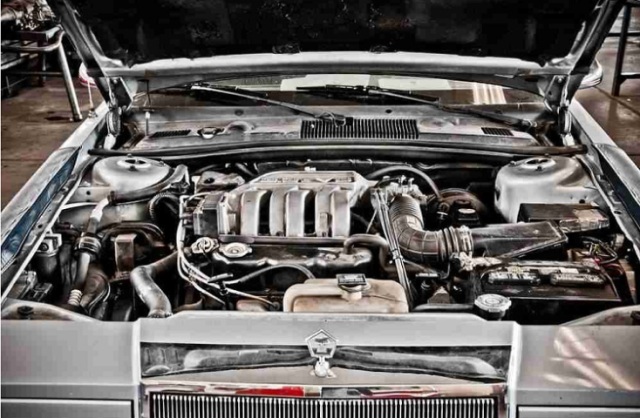Do you have an idea on how to go about diagnosing the cooling system problem of your car? If the answer is no, check out this article and know how to diagnose a cooling system problem.
How To Diagnose A Cooling System Problem
If you love driving a car, it is very necessary to be conversant with the problems that might lead to a breakdown. After all, you do not want to get stuck on a lonely road with your car stuck and without any idea as to what is wrong with it. The routine usage of a car leads to wear and tear, which in turns might result in a number of problems. Amongst the numerous troubles with the car, one of the most common ones is that with the cooling system. Though it is not very difficult to diagnose it, many drivers do not know how to go about the same. To help all such drivers, we have provided a number of tips that will help in diagnosing car cooling system problem.

Image: andrijbulba@flickr
How to Diagnose a Cooling System Problem
Items Needed
- Antifreeze/ Water
- Coolant
Method
- First of all, you need to understand that a low coolant level can easily lead to overheating problems in the car.
- Now, you have to check the coolant level at the radiator overflow/plastic coolant reservoir tank, to see whether or not are you low on coolant.
- If you notice that the coolant level of your car is low, quickly add some coolant to it.
- Next, you need to cool down the engine of the car and open the radiator cap to look inside it.
- If the radiator comes across as empty, pour either antifreeze or water into it and then, close the cap tightly.
- Check the lower and upper radiator hoses. Held by hose clamps, they are located at the top and bottom of the radiator, on the back side.
- You need to make sure that both the upper and lower radiator hoses are securely fixed to the radiator and are not leaking.
- Turn on the car for a few seconds and turn it off again. When the engine is warm, not hot, lightly touch the upper and lower radiator hoses.
- Even if one of the two hoses is cold, it means that the thermostat has been stuck closed.
- When the car is turned off and its engine warm, feel the outside of the radiator, from top to bottom, using the palm of your hand.
- The radiator should be warm to the touch, from top to bottom, evenly throughout. If you experience any cold section, the trouble will be internal blocking of the radiator.
- Now, you have to look for any signs of coolant (greenish, slippery and sweet-smelling liquid) leak. For the purpose, you need to check under the car, inspect the radiator and look around the engine compartment.
- If you know that there is some leak in the car, but are not able to find it, it is better to let a mechanic do the diagnosis. He will pressurize the cooling system and detect the slowest as well as the smallest of leak, which is not visible to the naked eye.
See also
- BMW | Bajaj Auto Ltd | Bentley | Car Insurance | Cars in India | Concept Cars | Fiat | Ford | General Motors | Geneva Auto Show
More from iloveindia.com
- Home Remedies | Ayurveda | Vastu | Yoga | Feng Shui | Tattoos | Fitness | Garden | Nutrition | Parenting | Bikes | Cars | Baby Care | Indian Weddings | Festivals | Party ideas | Horoscope 2015 | Pets | Finance | Figures of Speech | Hotels in India : Delhi | Hyderabad | Chennai | Mumbai | Kolkata | Bangalore | Ahmedabad | Jaipur
- Contact Us Careers Disclaimer Privacy Policy Advertise With Us Lifestyle Sitemap Copyright iloveindia.com. All Rights Reserved.







